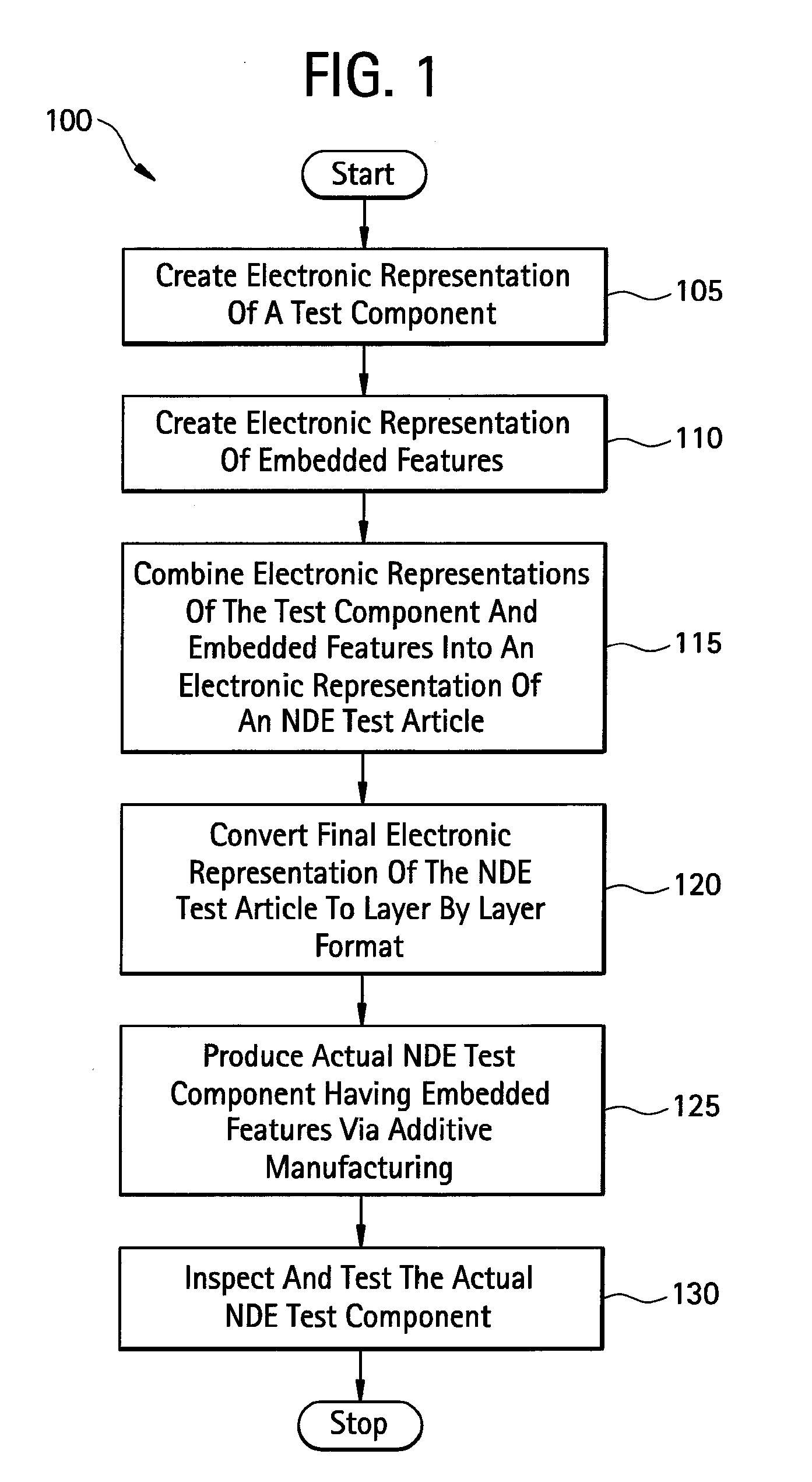Method, system and computer program product for producing a test article having embedded features for nondestructive evaluation
a technology of non-destructive evaluation and test articles, applied in probabilistic cad, instruments, computing, etc., can solve the problems of difficult to bury a calibration target in such a reference standard without also removing additional part materials, and the geometry, location and orientation of the calibration target are limited, so as to achieve the the possible geometry of the test article. , the effect of reducing the probability of detection
- Summary
- Abstract
- Description
- Claims
- Application Information
AI Technical Summary
Benefits of technology
Problems solved by technology
Method used
Image
Examples
example 1
[0046]The method 100 can be applied to the case of a test article including a rectangular block 25 mm long×15 mm wide×16.5 mm tall.
[0047]FIG. 2 illustrates an electronic representation 200 (e.g., a CAD file) of the 3D geometry of a test object produced at block 105 of FIG. 1. In this example, as described above, the test object is a rectangular block 205 that is 25 mm long×15 mm wide×16.5 mm tall.
[0048]FIG. 3 illustrates an electronic representation 300 (e.g., a CAD file) of the 3D geometry of one or more calibration targets generated at block 110 of FIG. 1. In this example, the one calibration target is a sphere 305 that is 0.125″ (3.175 mm) in diameter and the second calibration target is a cone 310 with a base diameter of 0.125″ (3.175 mm). Each target is joined to a cylinder 306, 311 that is 0.2 mm in diameter to connect them to the surface of the block 205 to mark the locations.
[0049]FIG. 4 illustrates the combined electronic representations 400 of the electronic representation...
example 2
[0054]The method 100 can also be applied to the simple case of a POD standard including a pipe geometry (i.e., the test article) with an inside diameter (ID) of 20 mm and an outside diameter (OD) of 40 mm. This POD standard is produced to include several half-penny thin notches (designed to simulate axially oriented cracks) connected to the ID surface. Four different thin notches with radii of 2.0, 4.0, 6.0 and 8.0 mm, respectively, are produced in this sample during the manufacturing. The thickness for all of the notches is 0.100 mm.
[0055]FIG. 10 illustrates an electronic representation 1000 of a POD sample as produced at block 105 of FIG. 1. As such, the POD sample is generated as an electronic representation 1000 (e.g., a CAD file) of the 3D geometry of a test component. In this example, the test component is a simulated section of a pipe 25 mm long with an outside diameter (OD) 1005 of 40 mm and an inside diameter (ID) 1010 of 20 mm. The electronic representation 1000 might incl...
PUM
 Login to View More
Login to View More Abstract
Description
Claims
Application Information
 Login to View More
Login to View More - R&D
- Intellectual Property
- Life Sciences
- Materials
- Tech Scout
- Unparalleled Data Quality
- Higher Quality Content
- 60% Fewer Hallucinations
Browse by: Latest US Patents, China's latest patents, Technical Efficacy Thesaurus, Application Domain, Technology Topic, Popular Technical Reports.
© 2025 PatSnap. All rights reserved.Legal|Privacy policy|Modern Slavery Act Transparency Statement|Sitemap|About US| Contact US: help@patsnap.com



